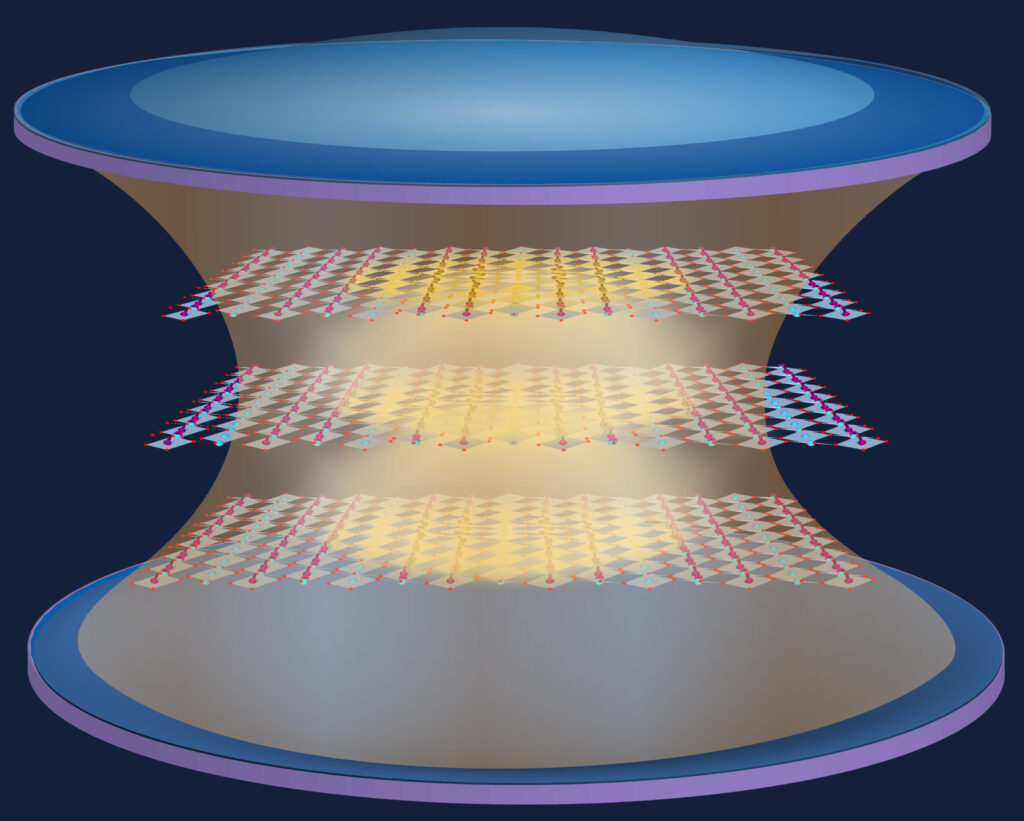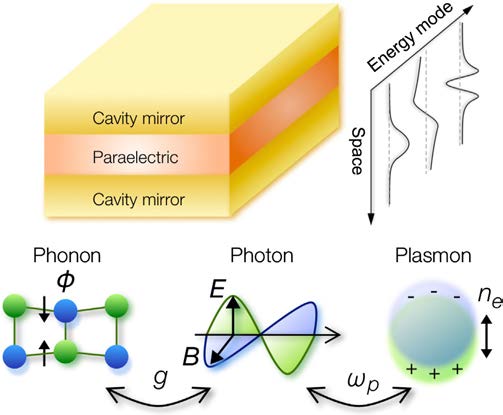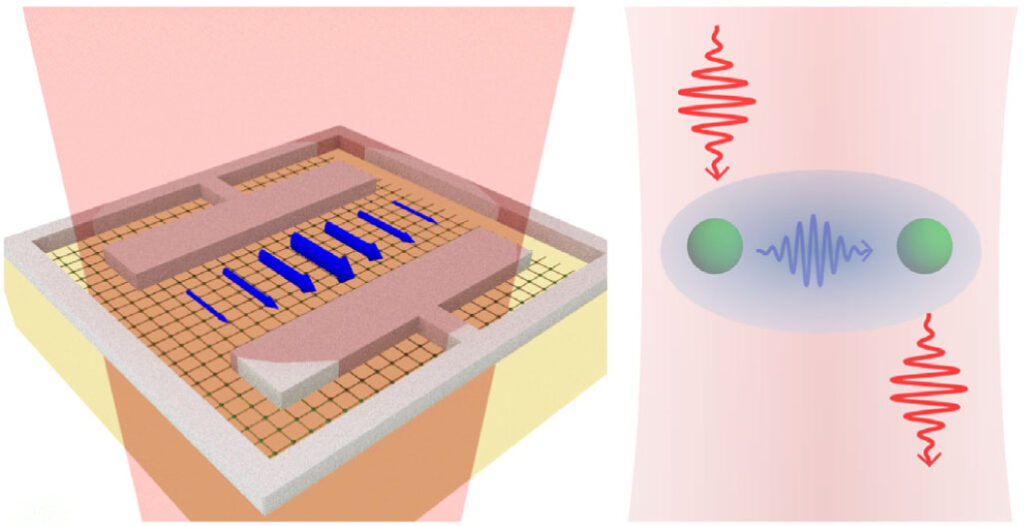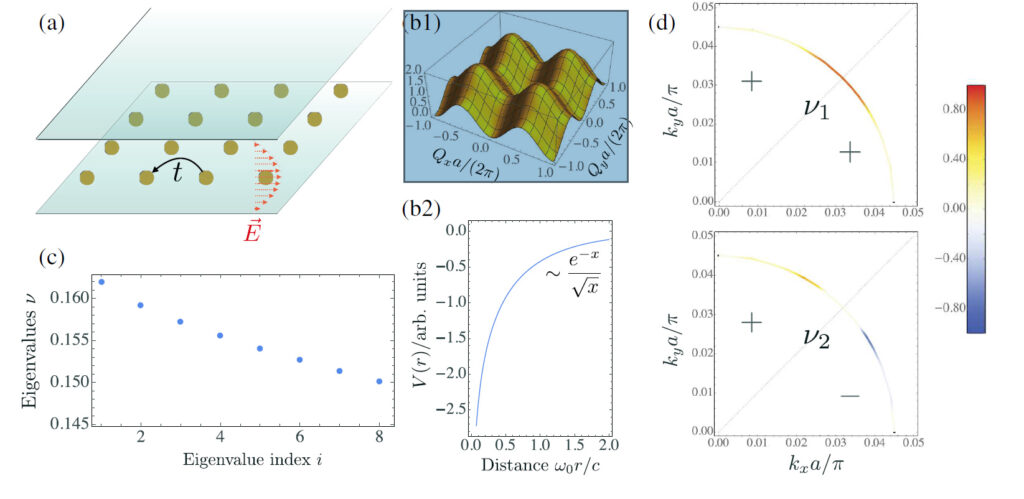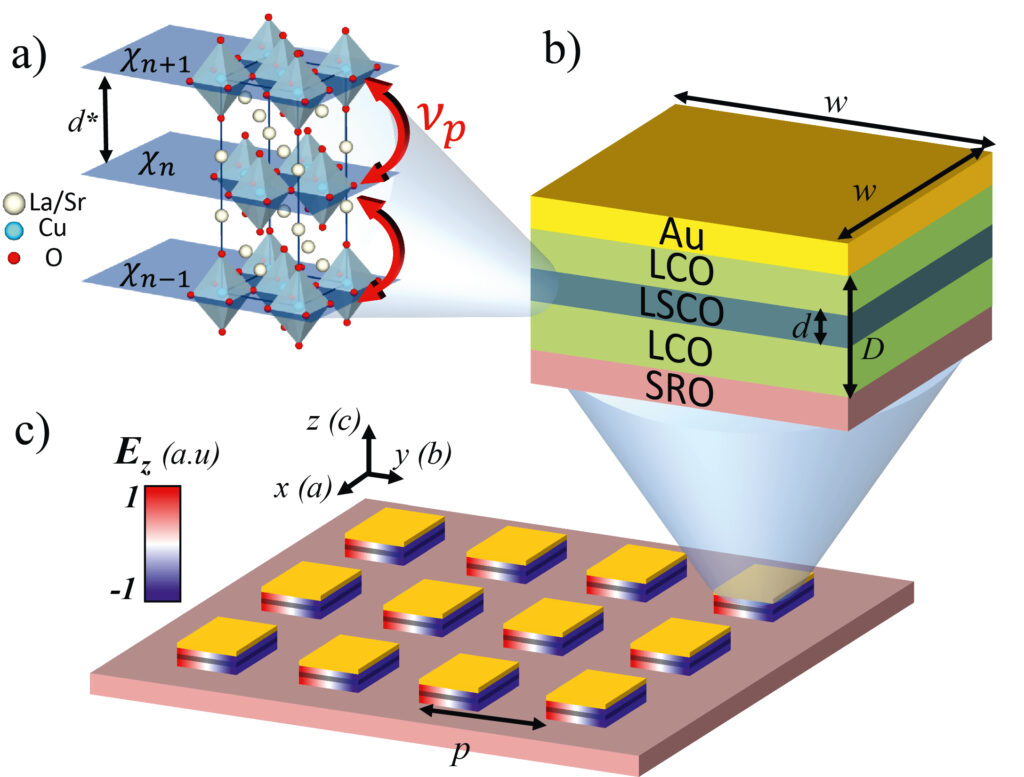A novel approach to steer functionalities in quantum materials is based on the use of quantum fields in optical and terahertz cavities. For example, optical resonators have been shown to modify dramatically the path of chemical reactions as well as the electronic transport properties in semiconductors. We aim to harness strong light-matter coupling by embedding quantum materials in optical and terahertz cavities to manipulate their electronic interactions and modify their macroscopic properties. Quantum light fields in cavities offer a new pathway to alter the ground state of materials, building a bridge between material tuning by external static stimuli (e.g., electric and magnetic fields) and the creation of non-equilibrium driven phases. In this regard, recent theoretical collaborations have been devoted to the development of the quantum counterparts of light-induced superconductivity and light-induced ferroelectricity using terahertz cavities.
Key publications
Quantum Electrodynamic Control of Matter: Cavity-Enhanced Ferroelectric Phase Transition
Y. Ashida, A. Imamoğlu, J. Faist, D. Jaksch, A. Cavalleri, and E. Demler
Physical Review X 10, 041027 (2020)
Abstract
The light-matter interaction can be utilized to qualitatively alter physical properties of materials. Recent theoretical and experimental studies have explored this possibility of controlling matter by light based on driving many-body systems via strong classical electromagnetic radiation, leading to a timedependent Hamiltonian for electronic or lattice degrees of freedom. To avoid inevitable heating, pump-probe setups with ultrashort laser pulses have so far been used to study transient light-induced modifications in materials. Here, we pursue yet another direction of controlling quantum matter by modifying quantum fluctuations of its electromagnetic environment. In contrast to earlier proposals on light-enhanced electronelectron interactions, we consider a dipolar quantum many-body system embedded in a cavity composed of metal mirrors and formulate a theoretical framework to manipulate its equilibrium properties on the basis of quantum light-matter interaction. We analyze hybridization of different types of the fundamental excitations, including dipolar phonons, cavity photons, and plasmons in metal mirrors, arising from the cavity confinement in the regime of strong light-matter interaction. This hybridization qualitatively alters the nature of the collective excitations and can be used to selectively control energy-level structures in a wide range of platforms. Most notably, in quantum paraelectrics, we show that the cavity-induced softening of infrared optical phonons enhances the ferroelectric phase in comparison with the bulk materials. Our findings suggest an intriguing possibility of inducing a superradiant-type transition via the light-matter coupling without external pumping. We also discuss possible applications of the cavity-induced modifications in collective excitations to molecular materials and excitonic devices.
Photo-induced electron pairing in a driven cavity
H. Gao, F. Schlawin, M. Buzzi, A. Cavalleri, D. Jaksch
Physical Review Letters 125, 053602 (2020)
Abstract
We demonstrate how virtual scattering of laser photons inside a cavity via two-photon processes can induce controllable long-range electron interactions in two-dimensional materials. We show that laser light that is red (blue) detuned from the cavity yields attractive (repulsive) interactions whose strength is proportional to the laser intensity. Furthermore, we find that the interactions are not screened effectively except at very low frequencies. For realistic cavity parameters, laser-induced heating of the electrons by inelastic photon scattering is suppressed and coherent electron interactions dominate. When the interactions are attractive, they cause an instability in the Cooper channel at a temperature proportional to the square root of the driving intensity. Our results provide a novel route for engineering electron interactions in a wide range of two-dimensional materials including AB-stacked bilayer graphene and the conducting interface between LaAlO3 and SrTiO3.
Cavity-mediated electron-photon superconductivity
F. Schlawin, A. Cavalleri, D. Jaksch
Physical Review Letters, 122, 133602 (2019)
Abstract
We investigate electron paring in a two-dimensional electron system mediated by vacuum fluctuations inside a nanoplasmonic terahertz cavity. We show that the structured cavity vacuum can induce long-range attractive interactions between current fluctuations which lead to pairing in generic materials with critical temperatures in the low-Kelvin regime for realistic parameters. The induced state is a pair-density wave superconductor which can show a transition from a fully gapped to a partially gapped phase—akin to the pseudogap phase in high-Tc superconductors. Our findings provide a promising tool for engineering intrinsic electron interactions in two-dimensional materials.
Proposed cavity Josephson plasmonics with complex-oxide heterostructures
Y. Laplace, S. Fernandez-Pena, S. Gariglio, J.-M. Triscone, A. Cavalleri
Physical Review B, 93, 075152 (2016)
Abstract
We discuss how complex-oxide heterostructures that include high-Tc superconducting cuprates can be used to realize an array of submillimeter cavities that support Josephson plasmon polaritons. These cavities have several attractive features for new types of light-matter interaction studies and we show that they promote “ultrastrong” coupling between THz frequency radiation and Josephson plasmons. Cavity electrodynamics of Josephson plasmons allows us to manipulate the superconducting order-parameter phase coherence. As an example, we discuss how it could be used to cool superconducting phase fluctuations with light.

